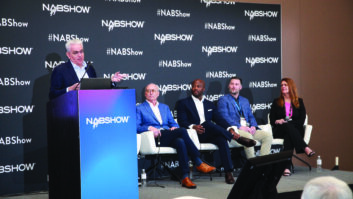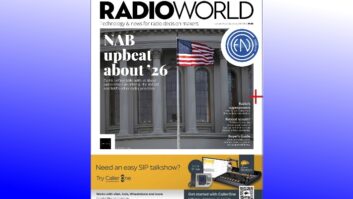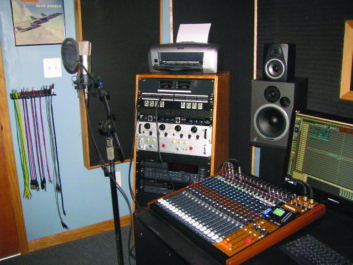 My history with Tascam goes back to the early 1990’s when I built my first studio in my parents’ garage. My console was Tascam’s M2516, a 16-channel 8-bus mixer, paired with their TSR-8 analog 8-track reel-to-reel recorder. It was a fun setup to work with.
My history with Tascam goes back to the early 1990’s when I built my first studio in my parents’ garage. My console was Tascam’s M2516, a 16-channel 8-bus mixer, paired with their TSR-8 analog 8-track reel-to-reel recorder. It was a fun setup to work with.
In 2003, having long since moved out, I replaced both with a Tascam DM-24 digital console mated to a DAW. That setup served me well for many years, until recent changes in workflow led me to go boardless. I still enjoy mixing on an analog console whenever I can; so when I was asked to try out Tascam’s latest offering, the Model 24, I jumped at the chance.
Unboxing the mixer, my first impression was that it was larger than I thought it would be. Its footprint is pretty close to that of my old DM-24. Not exactly monstrous, but it’ll need more space than the average desktop interface and laptop. That’s fine, because if I’m going to mix on an analog console, I want something I can get my hands on!
THE SPECS
Unlike a lot of small mixers today, it features full 100 mm faders. Call me picky, but 60 mm (or smaller) faders just feel “toy”-ish to me. The input preamps offer 50 dB of gain for mic level signals (30 dB for line level), plus a 100 Hz rolloff switch. The channel EQ is a simple three-band boost/cut style with a frequency-variable midrange. Just above the EQ controls are single-knob compressor stages for the first 12 channels. The first two channels also offer hardware insert points and instrument input switches. South of the EQ there are two monitor sends followed by an FX send. Then we have the pan pots, faders, and buss assignment and mute switches.
Channels 13 through 20 are arranged in fixed stereo pairs, with simple three-band EQs. Channels 21 and 22 are a stereo pair dedicated to smartphone audio or other unbalanced media devices. This channel is Bluetooth capable, so no need for phone adapters. The output section features faders for stereo output and monitor busses, as well as a fader for a separate submix. There are separate controls for control room monitors, headphones, and solo. There is a built-in FX section featuring a few basic reverb and delay settings, along with master aux controls. The output section also includes a basic seven-band graphic equalizer that can be assigned to the main stereo bus or the monitors. A global phantom power switch is provided for the mic channels.
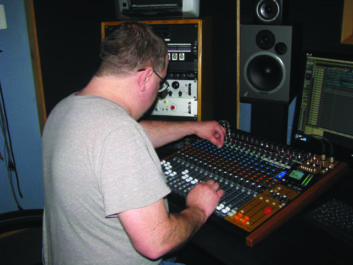
[Tascam Delivers Cassette Deck With a Twist]
Rounding out the feature set are the SD recorder section and the USB interface. On the USB side, the Model 24 can act as a 22 input/24 output-channel ASIO I/O for PC or Mac. It can also make multitrack or stereo recordings internally using SDHC and SDXC cards. Although the design emphasis appears to be on live scenarios, it seems the design is attempting to be all things to all people, but how well does it pull that off?
The mixer itself is every bit as intuitive as most other analog mixers. The gas pedal, brake and steering wheel are where they’re expected to be, if you know what I mean.
At first, the color scheme of the controls seemed garish; but then I imagined operating this in the back of a darkened club, and it made perfect sense.
My biggest complaint is the feel of the controls. The faders seem very stiff and gritty, and the pots feel fragile. I realize it’s not a Wheatstone or a Harrison, and it’s not trying to be; but even the controls on my old M2516 felt smoother. I didn’t have months to take this on the road, so I could be wrong, but I don’t see it surviving the rigors of the club circuit.
On the other hand, I was very impressed with the mic preamps on this mixer. They are very quiet, even at high gain settings. They held their own against my outboard Class A mic preamp with Jensen input transformers, using a Rode NT2 large diaphragm condenser and a good old fashioned Shure SM58. Certainly, the outboard preamp sounded clearer, but not several hundred dollars clearer!
[Subscribe to our newsletter and get it delivered right to your inbox.]
I wish, however, that the phantom power wasn’t global, affecting all channels at once. This makes it difficult to employ ribbon mics in a session with condensers. I understand that most live setups aren’t going to get that complicated, but even splitting the phantom supply between two sets of channels with two switches would have been nice.
The EQ does what it’s supposed to do, where it’s supposed to do it. The variable midrange is a welcome feature. The single knob compressor does well managing levels when used judiciously. That single knob adjusts the threshold of the fixed 6:1 ratio. Extreme settings will certainly introduce pumping and drop the overall level considerably. Setting it about halfway sounded ideal for spoken word. An LED adjacent to the control indicates how much compression is happening.
The built-in SD card recorder would be a handy feature if all it did was record the main stereo output, but it does much more than that. It can also record and playback from any channel selected. This makes it very useful for field recording, or even just as a backup recording to supplement other methods. One cool aspect of this feature is that, regardless of how many input channels are assigned to the recording, the main stereo bus is always assigned and always recorded; so, as long as it’s recording, something is always captured. The SD recordings can be backed up and restored via the Model 24’s USB connection. Recording via SD cards is limited to 44.1 kHz and 48 kHz sample rates. A 16GB SD card will hold a little over 16 hours of recorded material.
AUDIO INTERFACE
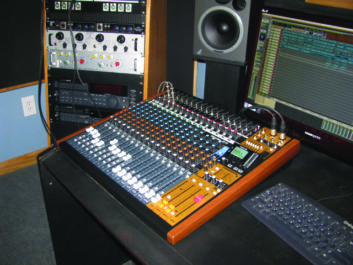 The Model 24 also functions as a very capable audio interface for PC or Mac. The ASIO drivers and software must be downloaded from the TEAC/Tascam website, as no driver disc is included.
The Model 24 also functions as a very capable audio interface for PC or Mac. The ASIO drivers and software must be downloaded from the TEAC/Tascam website, as no driver disc is included.
The install went very smoothly on my Windows 8.1 workstation. I was quickly able to bring multiple tracks from my DAW to individual channels on the mixer and mix in the analog realm (still a preference for some). Recording in this mode, as with the SD recorder, provides separate ASIO inputs for all channels. This makes it ideal for the home project studio that needs a little more than just an eight-input USB interface.
It’s clear that Tascam built this mixer to a price point — in this case, a little under $1,000. Where the feature set is concerned, they succeeded. This thing is an audio Swiss Army knife. Just considering its use as an interface for a DAW, it’s a good value, providing over twice as many inputs as the average rackmount unit, and throwing in EQ, effects, and some basic compression to boot.
Here at Star 99.1, we occasionally host small live performances in our studios, featuring the artists we play. A mixer like this is almost perfect for the job, and it allows us to record the performance with no additional gear. As part of a personal production rig, it’s certainly worth a look, and a listen.
Curt Yengst, CSRE, is assistant engineer for WAWZ in Zarephath, N.J.
PRODUCT CAPSULE
Tascam Model 24
Mixing Console
Thumbs Up
+ Easy to use
+ Multiple options for recording
+ Clean, quiet preamps
+ Digital interface section
Thumbs Down
– Feel of the controls
– Global phantom power
Price: $999.99
For information, contact Tascam in California at 1-323-726-0303 or visit www.tascam.com.




